 Traveling Exhibitions
Traveling Exhibitions Traveling Works of Art
Traveling Works of Art Conservation Projects
Conservation Projects Excavations
Excavations Fellows
Fellows Exchanges & Collaborations
Exchanges & Collaborations Multiple Items
Multiple Items
The Met Around the World presents the Met’s work via the global scope of its collection and as it extends across the nation and the world through a variety of domestic and international initiatives and programs, including exhibitions, excavations, fellowships, professional exchanges, conservation projects, and traveling works of art.
The Met Around the World is designed and maintained by the Office of the Director.
Traveling
Exhibitions
The Met organizes large and small exhibitions that travel beyond the Museum's walls, extending our scholarship to institutions across the world. See our national and international traveling exhibition program from 2009 to the present.
Traveling
Works of Art
The Met lends works of art to exhibitions and institutions worldwide to expose its collection to the broadest possible audience. See our current national and international loans program.
Conservation
Projects
The preservation of works of art is a fundamental part of the Met's mission. Our work in this area includes treating works of art from other collections. See our national and international conservation activities from 2009 to the present.
Excavations
The Met has conducted excavations for over 100 years in direct partnership with source countries at some of the most important archaeological sites in the world. Today we continue this tradition in order to gain greater understanding of our ancient collections. See our national and international excavation program from the Met's founding to the present.
Fellows
The Met hosts students, scholars, and museum professionals so that they can learn from our staff and pursue independent research in the context of the Met's exceptional resources and facilities. See the activities of our current national and international fellows.
Exchanges & Collaborations
The Met's work takes many forms, from participation in exchange programs at partnering institutions and worldwide symposia to advising on a range of museum issues. These activities contribute to our commitment to advancing the work of the larger, global community of art museums. See our national and international exchange program and other collaborations from 2009 to the present.
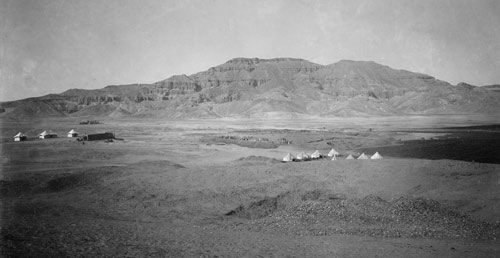 Excavations at the palace of Amenhotep III, Malqata, 1910–11 season (PA24). Debris in the foreground consists of mounds of broken pottery.
Excavations at the palace of Amenhotep III, Malqata, 1910–11 season (PA24). Debris in the foreground consists of mounds of broken pottery.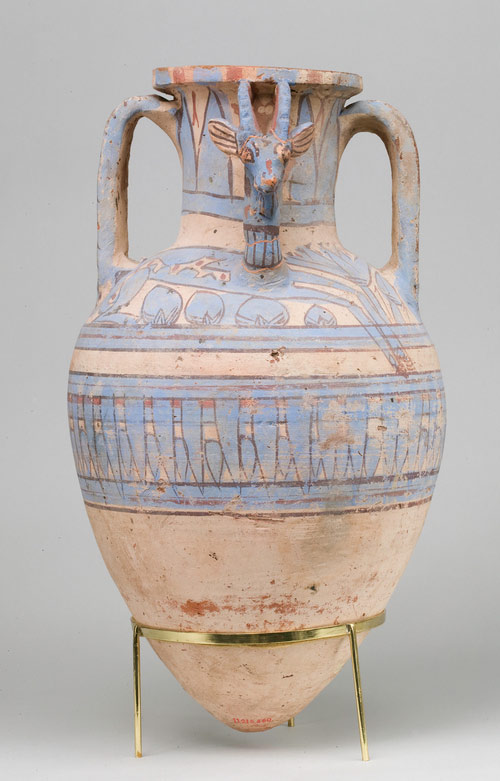
Blue-Painted Ibex Amphora from Malqata
New Kingdom, Dynasty 18, reign of Amenhotep III, ca. 1390–1353 B.C.
Egypt, Upper Egypt; Thebes, Malqata, Palace of Amenhotep III, Atitu's (rubbish) hole, MMA 1910–1911
Rogers Fund, 1911 (11.215.460)

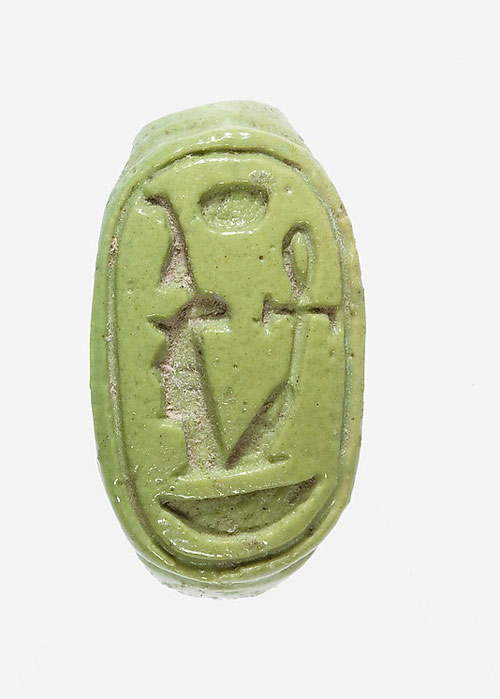
Ring Inscribed with the Prenomen of Amenhotep III
New Kingdom, Dynasty 18, reign of Amenhotep III, ca. 1390–1352 B.C.
Egypt, Upper Egypt; Thebes, Malqata, Palace of Amenhotep III, MMA 1910–1911
Rogers Fund, 1911 (11.215.73)

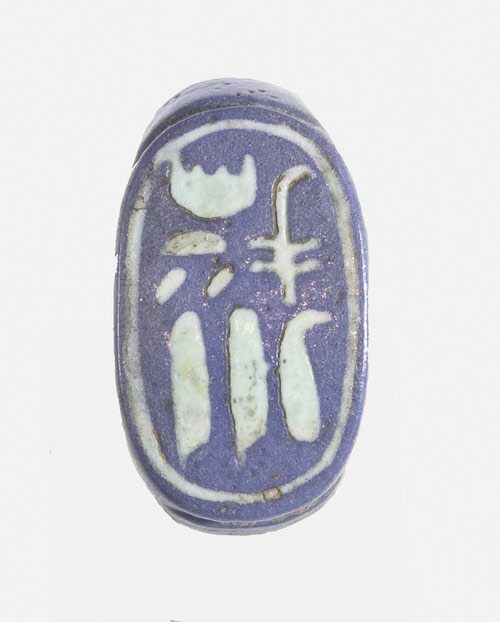
Inscribed Ring, Royal Wife Tiy
New Kingdom, Dynasty 18, reign of Amenhotep III, ca. 1390–1353 B.C.
Egypt, Upper Egypt; Thebes, Malqata, Palace of Amenhotep III, House 2.w, MMA 1911–1912
Rogers Fund, 1911 (11.215.83)

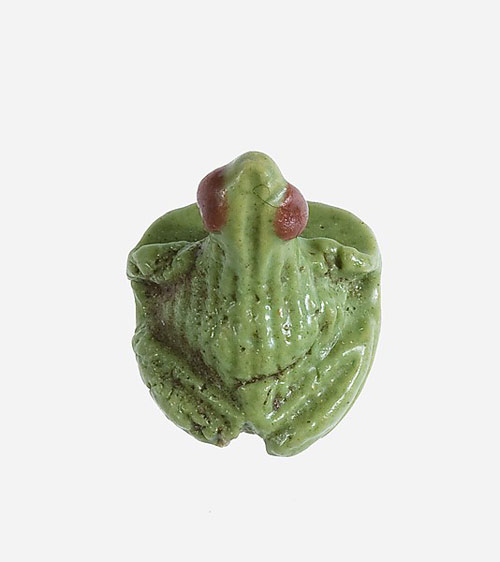
Stamp Seal in the Shape of a Frog
New Kingdom, Dynasty 18, reign of Amenhotep III, ca. 1390–1352 B.C.
Egypt, Upper Egypt; Thebes, Malqata, Palace of Amenhotep III, MMA 1910–1911
Rogers Fund, 1911 (11.215.48)

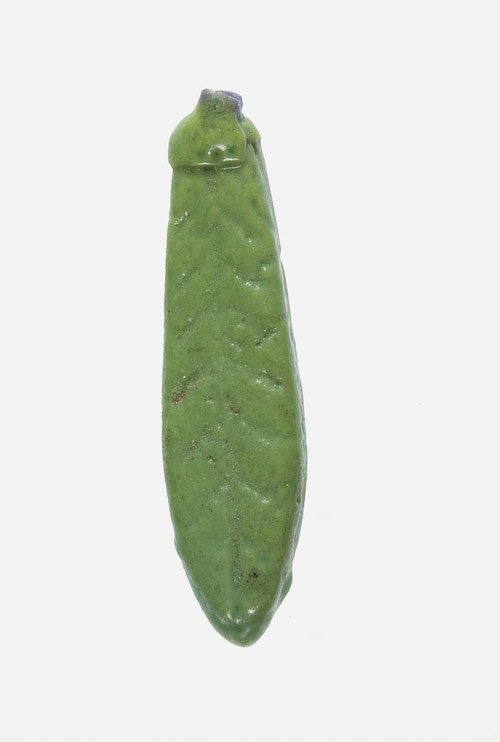
Leaf Pendant
New Kingdom, Dynasty 18, reign of Amenhotep III, ca. 1390–1353 B.C.
Egypt, Upper Egypt; Thebes, Malqata, Palace of Amenhotep III, MMA 1910–1911
Rogers Fund, 1911 (11.215.339)

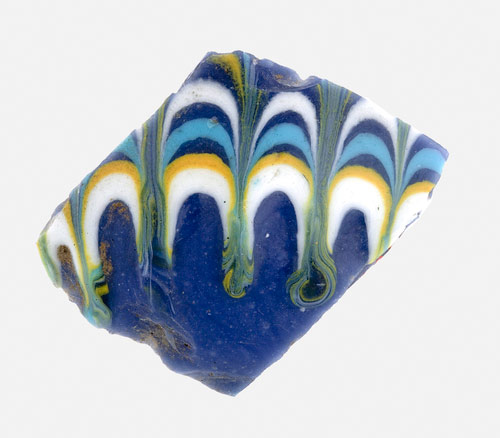
Fragment of a Glass Vase
New Kingdom, Dynasty 18, reign of Amenhotep III, ca. 1390–1353 B.C.
Egypt, Upper Egypt; Thebes, Malqata, Palace of Amenhotep III, MMA 1910–1912
Rogers Fund, 1912 (12.180.360)

[active] Egypt
1910–1920, 2008–present
Malqata is the modern name for the site of a mudbrick palace-city built by the Dynasty 18 pharaoh Amenhotep III (ca. 1390–1353 B.C.) for the celebration of his first Heb-Sed, a rejuvenation festival that traditionally occurred in the thirtieth year of a king's reign and periodically thereafter. Amenhotep had three Heb-Seds and for each festival the structures were refurbished and the site expanded.
In keeping with its purpose, the ancient name for the site was "the House of Rejoicing." It's modern name, Malqata, means a place where things are found, or picked up. This undoubtedly refers to the bits of painted pottery, glass, and faience that once littered the site—debris from Amenhotep's jubilees, each of which lasted for a number of months and included hundreds, if not thousands, of participants.
Amenhotep's "House of Rejoicing" and the surrounding villages were used only for his three festivals and were largely abandoned after the king's death. The site was never built on again and the mudbrick structures gradually fell into ruin and were eventually covered with wind-blown debris from the yearly sandstorms that blow off the high desert (the Sahara) to the west.
Excavations
Malqata preserves the ruins of one of the few extensive town sites that survive from ancient Egyptian times. In 1910, the Egyptian Antiquities Service granted the Metropolitan Museum's Egyptian Expedition a concession to work at the site, which had been partially explored by two previous expeditions. Metropolitan Museum Egyptologist Herbert E. Winlock, Hugh G. Evelyn-White, and finally Ambrose Lansing supervised the excavations. Work continued for six field seasons, ending in 1920. The areas explored included the royal palaces and ceremonial buildings, villas of court officials, a temple dedicated to the god Amun, and villages inhabited by the hundreds of servants, tradesmen, and craftsmen needed to provide services and goods for the royal court.
The Expedition's team of archaeologists and draftsmen produced plans of the structures, photographed the progress of the excavations, and published summaries of each season's work in the Museum's Bulletins. The archaeological finds included fragmentary paintings that had decorated the walls, ceilings, and floors of the palaces; distinctive blue-painted pottery; inscribed potshards and jar sealings; and raw materials for making glass vessels and faience jewelry that suggest nearby manufacture of these products. The Museum's share of these finds may be seen in Egyptian galleries 119 and 120.
In 2008, the Department of Egyptian Art began a reexamination of the site.
Partnered with The Michael C. Carlos Museum of Emory University.


